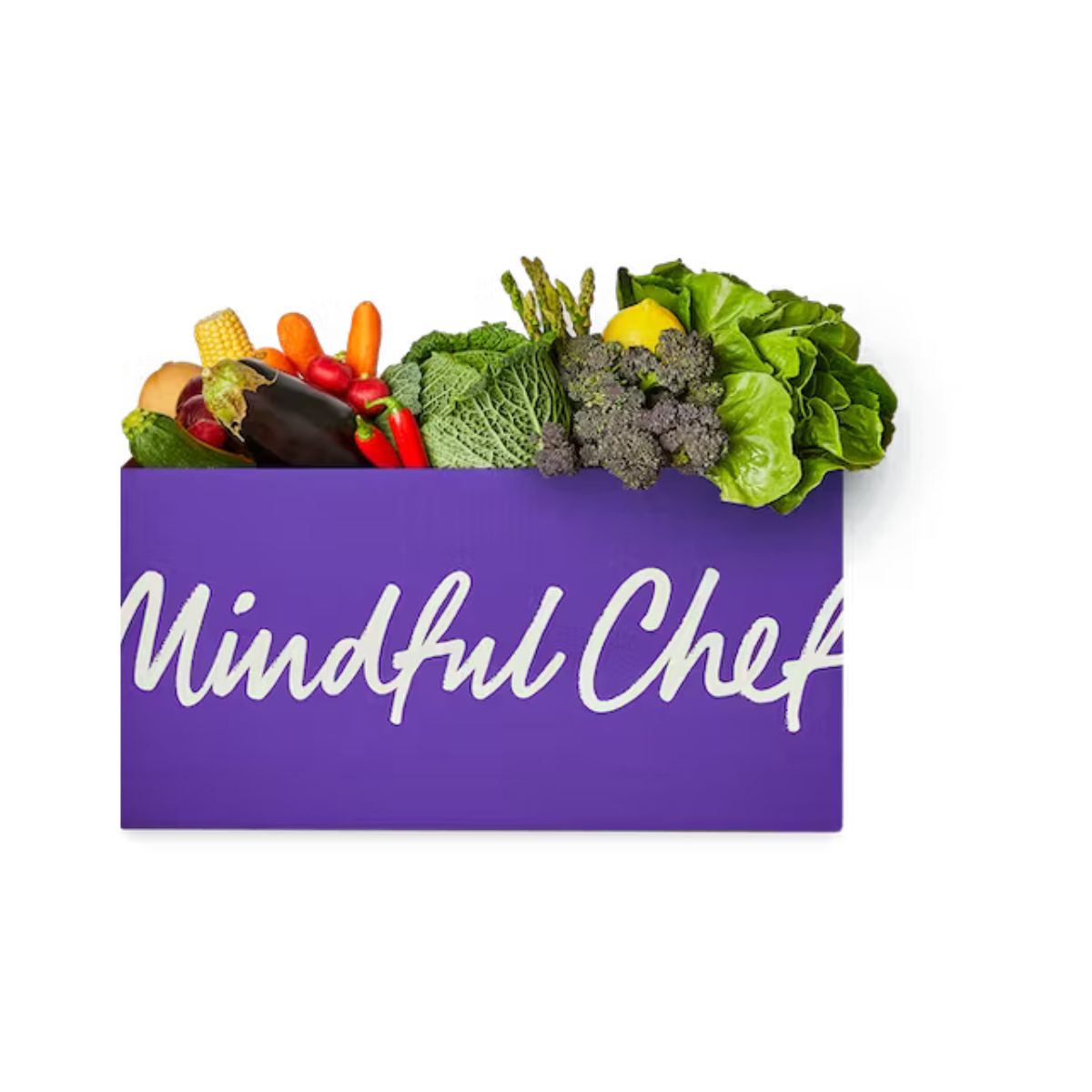I’ve Never Nailed my Lunch Game - But After Eating High-Protein Meals for 7 Days, my Energy, Focus, and Satiety Have Soared
Trust me, your 3 pm self will thank you.
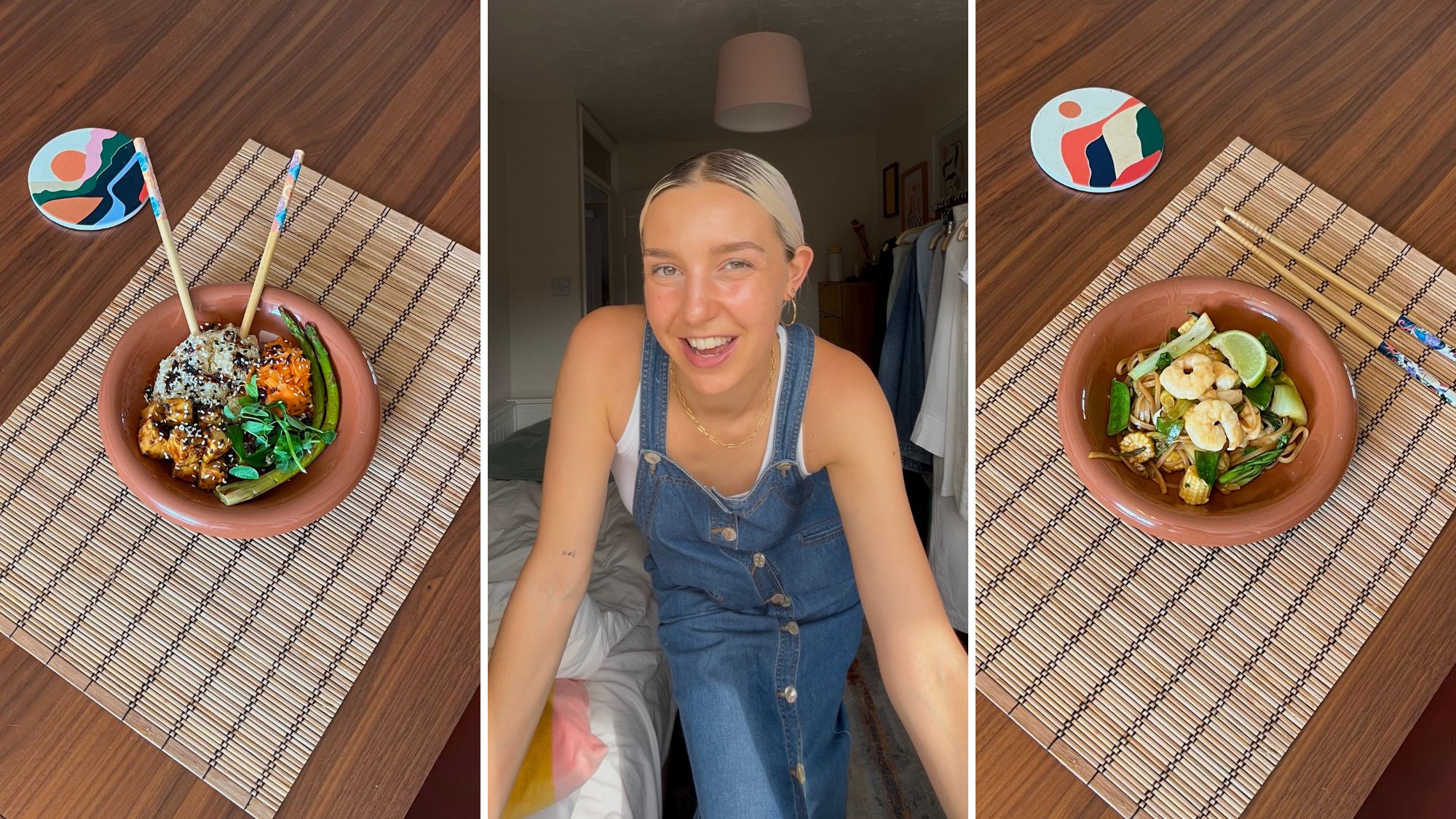

You probably don’t need me to tell you that protein is important. From TikTok’s viral high-protein recipes (which have racked up over 300 million views) to cottage cheese and bone broth becoming the latest “it-girl” ingredients, it seems that we’re collectively on a mission to up our intake, whether through lean meats, eggs, beans or tofu.
And in a lot of ways, rightly so. Long seen as the go-to nutrient for gym-goers and athletes, protein actually plays a highly important role in women’s health, with research demonstrating that the amino acids in protein-rich foods play a key part in hormone production and regulation, while also supporting our bones as we age. That last bit is particularly worth paying attention to, with studies showing one in five women in the UK is affected by osteoporosis (a condition that weakens bones, often due to hormonal shifts during menopause).
That said, this doesn’t mean that we all need to start frantically drinking mid-morning protein shakes, and in fact, according to nutritionist and founder of The Nourishu Method, Hannah Cartwright “a moderately high protein intake is generally right for most adults.” Reminding us that a food-first, balanced approach is key, she says that “the best thing is to drip feed protein into regular meals throughout the day, because this slows down digestion, helps regulate appetite hormones, reduces the chance of energy crashes and helps manage focus.”
And if you’re anything like me, this feels fairly straightforward when it comes to breakfast and dinner. Starting the day with eggs or a loaded yoghurt bowl is easy enough, and ending it with something like a tofu stir-fry comes naturally. It’s lunch, though, where for me things tend to fall apart. Thanks to a lack of time and inspiration, especially on busy days, I often find myself scoffing down a piece of toast or hurriedly slurping on a bowl of soup.
If that sounds familiar, or if you’re someone who finds themselves skipping lunch altogether, it turns out that we could be making life harder for ourselves later in the day. It’s all because of protein’s satiating and blood sugar stabilising qualities, which Cartwright mentioned, and which research supports.
So, curious to put the science and the expert advice to the test, I tasked myself with the mission of consistently prioritising my lunchtime protein for a week, with nutritionist-approved recipes and a goal of better energy, fewer cravings and a more productive 3 pm.
Keen to find out how it went? Scroll on for my honest review, including some of the recipes I used, and what the science says about how much protein we really need. And if a protein increase is on your mind, make sure to check out how a fellow MC-UK staffer felt when she ate high-protein breakfasts every day. We’ve also got features on the signs you’re not eating enough protein, plus buying guides to the best protein powders, best clear proteins, best vegan protein sources , too.
Celebrity news, beauty, fashion advice, and fascinating features, delivered straight to your inbox!
I Upped my Protein at Lunch - and, Honestly, I’ve Never Felt More Energised
What constitutes a high-protein lunch?
Speaking numerically, “a high protein lunch typically contains at least 20-30g of protein,” says Cartwright. “Of course, this will vary depending on your individual needs, but aiming for 20 to 25g per meal across the day helps support satiety, muscle maintenance, and energy levels in most people.”
In terms of what that actually looks like on a plate, it could be “100g of chicken or 140g of tofu, but it could also be made up of other, often forgotten additions, says Becky Pearce, Dietitian at Mindful Chef. “Just adding a sprinkle of nuts and seeds, a dollop of yoghurt or feta, and even wholegrain carbs like brown rice and quinoa can all contribute to making a high-protein lunch that meets the goal of 25 to 30g of protein,” she explains.
Dr Hanine Estephan, Global Health Executive and Nutrition Consultant to Elevate, agrees, but reminds us that we’re not just looking for quantity; the quality of the protein we consume matters too. “Studies consistently show the benefits of nutrient-dense, minimally processed protein sources,” she says. “This could be legumes, nuts, seeds, soy, dairy, eggs, fish, and lean meats, as well as high-quality supplemental proteins, such as organic whey.”
What are the benefits of eating a high-protein lunch?
Now that your mouth is watering, let’s get onto the benefits of upping your protein at lunchtime.
“Protein is really an integral nutrient,” says Cartwright. “It supports the health of our muscles, stabilises our blood sugar levels, protects our immune system, and plays an important role in the structure and function of our connective tissues, including our skin.”
“Think of it as the scaffolding that helps your body grow, heal, and stay strong,” adds Rory Larkin, Nutritionist and Development Chef at Lactalis Nestlé. “By consistently meeting your protein needs throughout the day, including a high-protein lunch, you support the maintenance of your muscles, bone health, immune function, and metabolic efficiency.”
“It’s also the most satiating nutrient,” says Cartwright, “which is why it's a good idea to spread your protein intake throughout the day, as opposed to loading it all into dinnertime.”
Dr Estephan agrees, pointing to the research for evidence. “Studies consistently show that eating regular high protein meals reduces between-meal hunger, helps maintain lean muscle mass and smooths energy levels, particularly when eaten with complex carbs and healthy fats, as this together helps to stabilise blood sugar and reduce the mid-afternoon energy dip,” she explains.
And “if you’ve exercised that morning or are under stress, protein at lunchtime is especially essential,” reminds Cartwright, “as this will help with your recovery, hormone regulation, and immune function - especially when combined with colourful vegetables and healthy fats.”
Are there risks to having too much protein?
For the experts, the biggest concern here is balance. “For most healthy individuals, it’s unlikely that there will be considerable risk to too much protein, as your body is quite efficient at handling any excess,” says Larkin. “However, what’s more important to remember is that an overly protein-focused diet can crowd out other essential nutrients, particularly fibre, vitamins, and antioxidants found in fruits and vegetables. Balance is key, and protein should be part of a varied, nutrient-rich diet.”
Cartwright agrees, explaining that “if you have too much protein in one go, your body will just wee it out, which is one of the reasons that we recommend you spread your protein throughout the day for best absorption and effectiveness.”
But while for most people there aren’t huge risks to protein overconsumption, Dr Estephan does recommend that we “stick to below approximately 2g of protein per kg of bodyweight per day,” in line with research guidelines. “Focus on complete protein sources with whole-food ingredients so that meals deliver both quality and balance,” she adds.
Of course, there are certain scenarios where someone may require a more individualised approach, such as if they are living with an existing kidney disease. In these circumstances, the experts advise consulting a doctor before increasing your protein intake.
6 nutritionist-approved high-protein lunch recipes
When it comes to suggesting high-protein lunch recipes, the experts are quick to take things back to basics, focusing on simple whole-food ingredients that are quick to throw together.
Cartwright’s favourites are a Teriyaki Tofu Rice Bowl or a Shredded Chicken, Hummus & Couscous Bowl. “For the tofu rice bowl, just combine crispy baked tofu with steamed broccoli, grated carrot, avocado and brown rice, and drizzle with a tamari-sesame dressing,” she says. “The hummus and couscous bowl is simply a chicken breast, sliced over herby couscous with cherry tomatoes, cucumber and a big spoon of hummus.”
Larkin agrees, but says he likes to opt for interesting pairings, such as cottage cheese with grilled figs and hot honey, or gouda and kimchi quesadillas. “It keeps things exciting whilst also delivering on nutritional value,” he explains, adding that he’s a huge fan of “protein pancakes with blueberry compote if you’re going for more of a brunch style, or a quark-based hummus with flatbreads for a Mediterranean vibe.”
I Increased My Lunchtime Protein Every Day for a Week - Here’s How it Made Me Feel
Days one to three
When day one of my high-protein lunch experiment arrived, I was feeling apprehensive. My diary was crammed with meetings, and most of my days would be spent out and about. For context, I’m a notoriously bad meal prepper - a hurdle I knew I’d have to tackle if this week was going to be a success.
Luckily, day one was a rare work-from-home day. After my usual breakfast of yoghurt, homemade granola and fruit, I decided to keep lunch simple: two slices of seeded sourdough toast. On one, I layered a thick spread of cottage cheese with hot honey (a recipe I picked up from Em The Nutritionist); on the other, I added two poached eggs. All in, it came to around 30g of protein, which felt surprisingly manageable, and not at all like an overload of food.
Straight after eating, I did feel fuller than usual, and a bit thirstier, too. But the real difference came later, when I looked up from my laptop to find it was already 4.30 pm. Normally, by 3.15 pm, I’d be eyeing the fridge or heading out for something sweet, but I still felt comfortably full and only began to get hungry again around 5 pm. As someone who often struggles to stay focused in the afternoon, this felt revolutionary, and my to-do list had far more ticks against it than it would usually.
That evening, I unpacked the first of my Mindful Chef recipe kits, which had been shared with me by Dietitian Becky Pearce, and prepped lunch for the following day. I’ve been a vegetarian for around five years, but recently started to reintroduce a little fish for variety, which meant day two’s lunch was garlic and chilli prawn noodles. It took less than 20 minutes to prep and went straight into a lunchbox, ready for a between-meetings meal on the bus the next day.
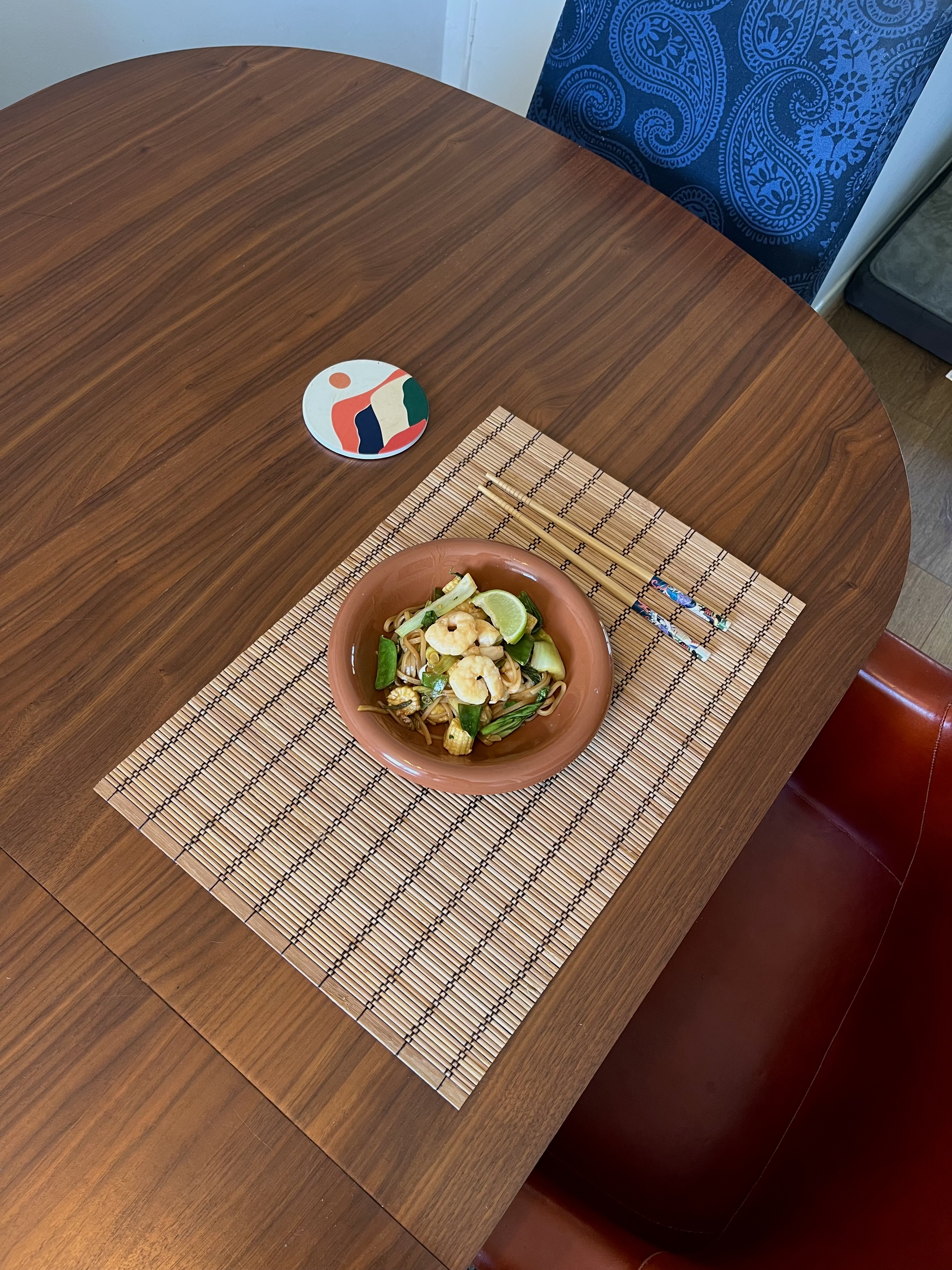
On day two, Ashleigh made garlic and chilli noodles with prawns and vegetables, using a Mindful Chef recipe
Again, my cravings were noticeably lower that afternoon, and I found myself actually looking forward to my post-work run. Normally by 4 pm, my energy dips and I’m often guilty of skipping evening workouts altogether, but with a more substantial lunch and a Pip & Nut almond butter bar behind me, I actually felt energised, and even hit a few PBs during my session. Whether it was the protein specifically or just a result of eating more overall, I definitely felt stronger and woke up the next day far less sore than usual.
On day three, I repeated the same prawn noodle dish (the recipe served two, which made things very efficient) and began to appreciate the value of prepping ahead.
Days four to seven
By the halfway mark, I was surprised at how quickly my body had adjusted to the increased protein. The idea of having just a soup or a lone piece of avocado toast for lunch now felt completely inadequate. So, I decided to try out a suggestion from Nutritionist, Rory Larkin: protein pancakes.
You can make a basic version with just a banana and an egg, but I prefer a thicker consistency to my batter, so I usually add a scoop of protein powder, which also makes it easier to hit the target 25-30g. I’m not wedded to a particular protein powder, and usually aim for a high-quality, organic whey or plant protein. At the moment, my pick is Selfish Supplements Vanilla Plant Protein (a blend of pea, brown rice, and hemp), along with two eggs, a banana, and a pinch of cinnamon. Once cooked, I topped the pancakes with a generous spoonful of Lindahls high-protein quark, which I use interchangeably with the FAGE Total Greek Yoghurt, plus fresh berries and figs.
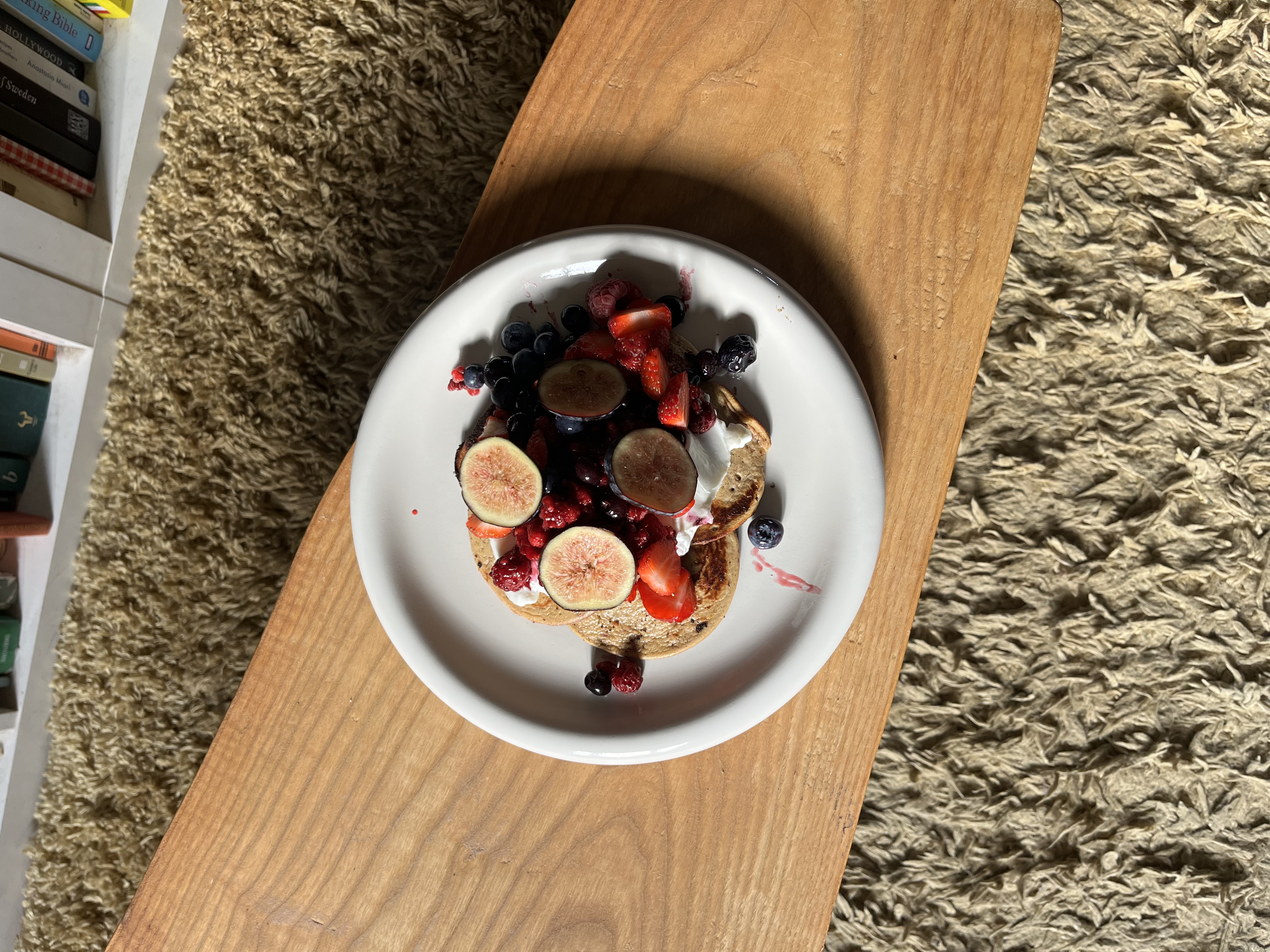
Ashleigh's plate of protein pancakes which she made for lunch on day for of her high-protein week
While the pancakes were a nice change of pace, I’ve always leaned more towards savoury lunches, and this week felt no different. That evening, I prepped a bowl for the next day using another Mindful Chef recipe - this time, a teriyaki duck, quinoa, and pickled carrot dish. I swapped the duck for 150g of tofu, and with the addition of sesame seeds and quinoa, the meal clocked in at just over 30g of protein.
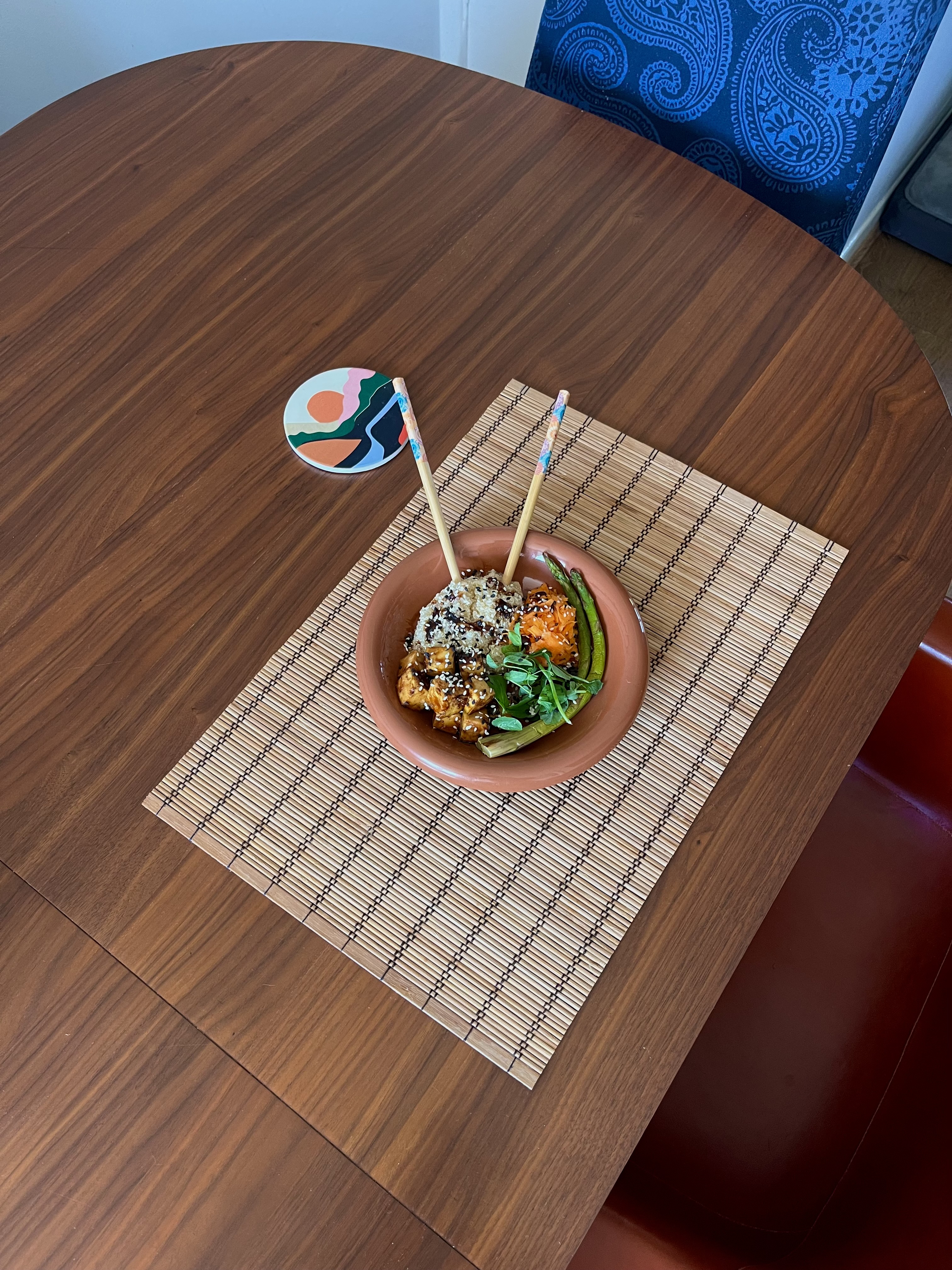
Ashleigh made Mindful Chef's teriyaki tofu bowl on day five
I’m currently training for a half-marathon, and have been frustrated by my recovery in recent weeks. I’ve felt regularly lethargic and achy, but by day six of eating high-protein lunches, I noticed a genuine improvement in my post-run soreness, my sleep, and my focus at my desk, even after a tough morning session.
By the weekend, I had a lunch booked with a friend, which would mark my first time navigating a protein-rich choice while eating out. I went for Shakshuka with two eggs, feta, seeded sourdough, and a yoghurt dip. It was delicious and something I’ll definitely recreate at home.
So, will I stick with high-protein lunches? Definitely, but I won’t pretend that it comes without a bit of concerted effort. And whilst I’ve really enjoyed the variety, for it to be sustainable, I’ll need to rely on some go-to staples which I can easily rotate. Two poached eggs on toast is going to be a regular feature, and I’ll definitely try to keep up the habit of prepping the night before.
What’s really sold me is the change in my afternoon energy levels. I’m suddenly able to work, socialise and exercise after 5 pm without needing to race home for dinner, which for me is enough to keep this habit going.
If there’s one takeaway from the week, it’s this: getting enough protein doesn’t mean overhauling your diet and forcing yourself to eat a huge volume of food. It just takes small, smart swaps such as choosing the higher-protein option, adding an extra handful of seeds, or simply being more mindful about what’s on your plate. And honestly? The effects on my brain and body have been nearly immediate.
Shop MC-UK high-protein lunch inspiration now:
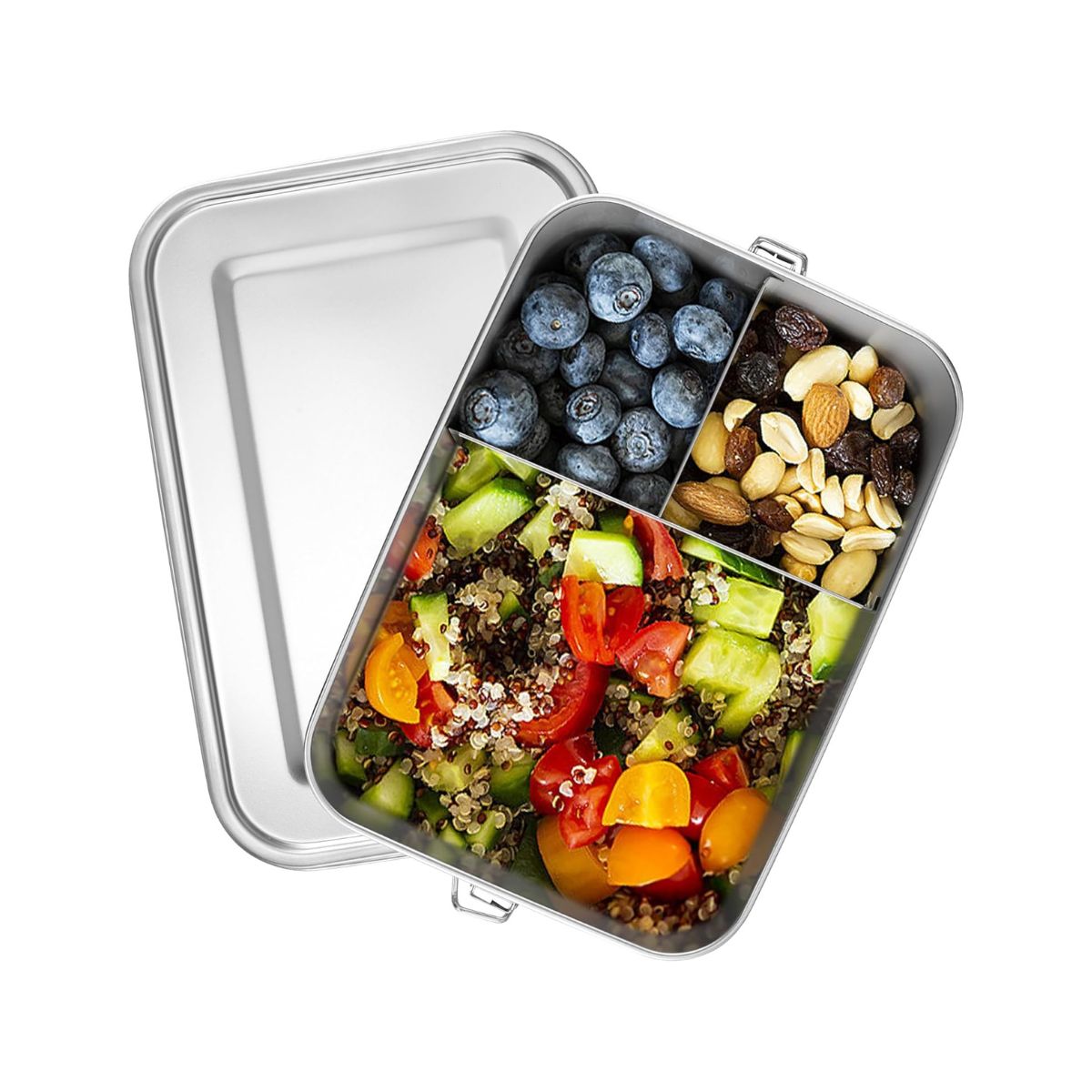
I'm always looking for a reliable and reusable food container, which is going to leak on me halfway through the day. And so far, I'm impressed by this one from Amazon. It effectively stores your food, is easy to clean, and has a large top which makes it easy to eat from. Wins all round, and a must-buy if you're planning to take food on the go.
What does a balanced lunch actually look like?
“There is no one perfect ratio,” says Nutritionist, Hannah Cartwright, who reminds us that “nutrition is unique as our personality and needs vary depending on so many factors like gender, age, activity level, health goals, and hormonal status.”
“That said, a balanced lunch might look like 20-30g of good quality protein, with some fibre-rich carbohydrates, colourful vegetables and healthy fats,” she says.
Nutritionist Rory Larkin agrees and suggests referring to Public Health England’s Eatwell Guide for guidance. “Aim to fill half your plate with vegetables or fruit,” he says. “Save one quarter for lean protein, a further quarter for whole grains or starchy vegetables and then add a drizzle of healthy fats, such as extra virgin olive oil or rapeseed oil."
And don’t forget fluids, says Dr Hanine Estephan, Global Health Executive and Nutrition Consultant to Elevate. “Water or unsweetened beverages are important for hydration, and should be included with every meal.”

A former heptathlete, Ashleigh is a freelance journalist, specialising in women’s health, wellbeing and lifestyle, with words in Stylist, Cosmopolitan, Glamour and Marie Claire. She’s also the Co-Founder of Sunnie Runners, an inclusive London based run club.

